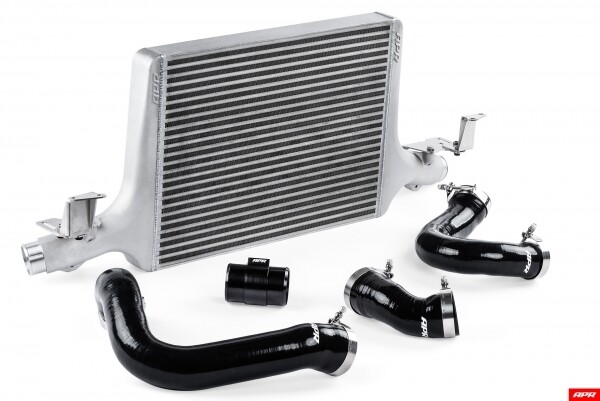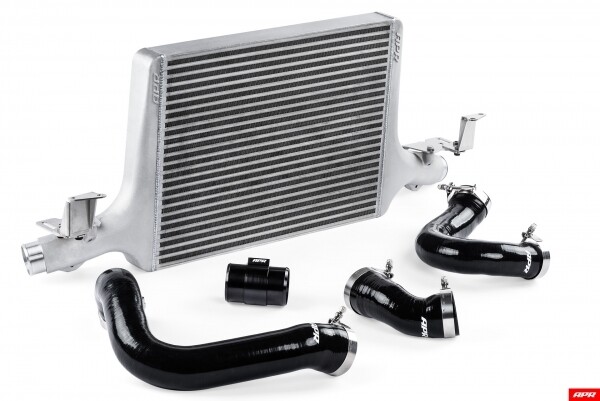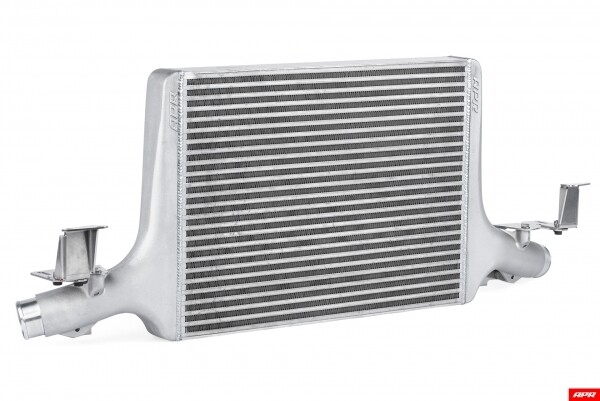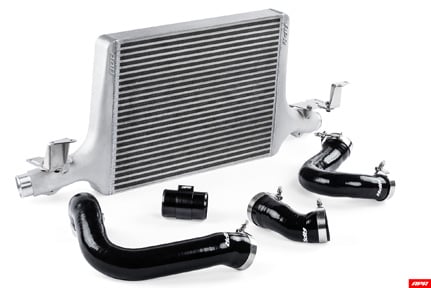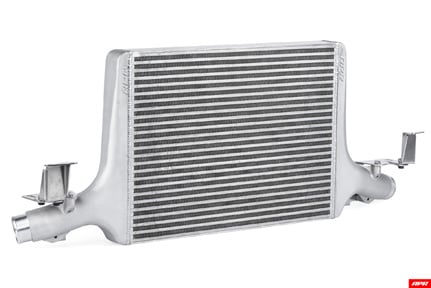
Artikel op bestelling, levertermijn +- 2 weken
Product information "APR Intercooler System - B9 3.0 TFSI"
The APR Intercooler System is a massive front mounted upgrade that dramatically reduces intake air temperature (IAT), minimizes heat soak, and provides increased performance! The system is an easy to install, direct bolt-on design, that is recommended at every stage of performance.
The APR Front Mount Intercooler System (FMIC) for the Audi B9 S4/S5 3.0T.
The APR Intercooler System is a massive front mounted upgrade that dramatically reduces intake air temperature (IAT), minimizes heat soak, and provides increased performance! The system is an easy to install, direct bolt-on design, that is recommended at every stage of performance.
Quick Facts:
- Dramatically lowers intake air temp (IAT)
The factory intercooler reaches dangerously high IAT levels, even on the stock ECU! - Massive frontal surface area and core volume
3.125" x 5.75" x 28.25" - 162.4 in² frnt. & 507.62 in³ volume - OEM
2.250" x 16.2" x 22.00" - 356.4 in² frnt. & 801.90 in³ volume - APR - Highly effective core design
Bar-and-plate core with staggered and louvered fins.
Rigorous testing determined core style, fin density, and size.
Low pressure drop + highly effective cooling = high performance! - Smooth cast end tanks
Engineered for low turbulence/restriction and maximum flow.
Organically shaped to promote airflow across entire core.
Pressure tested to prevent power robbing boost leaks. - Easy to install
Simple plug-and-play design with no trimming or drilling necessary! - Designed by engineers with lasers
With the best equipment and smartest engineers, it just works!
Testing
APR’s engineers tested each intercooler in a multitude of tests to show the impact the APR intercooler has on intake air temperature. The following tests were conducted with a 2017 S4 using the stock ECU calibration on 93 octane fuel and no other modifications. Ambient conditions during the stock intercooler tests were 72.8°F and 98.4 kPa with 78.7% relative humidity. Conditions were similar later in the day during during the APR Intercooler testing with 78.4°F and 98.5 KPa with 62.8% relative humidity. This gave the APR Intercooler no added advantage over the stock system during the tests.

First, six back-to-back dyno pulls were conducted with each intercooler. Each run was conducted in 4th gear, from idle to redline, with a cool down between runs. The stock intercooler failed to combat rising IAT’s and quickly exhibited power-robbing heat soak. IAT’s started at 35°C and quickly rose to 60°C by the end of the first dyno pull. This trend continued with the final dyno pull reaching a staggering 67°C! In contrast, the APR Intercooler only reached 34°C by the end of the first dyno pull. It was then able to continue rejecting heat, only reaching 36°C by the end of the final dyno pull. The APR Intercooler performed better after 6 back-to-back dyno pulls than the factory intercooler did on it’s very first dyno pull.

Next we tested a 10-135 second sprint through the gears. With the factory intercooler, IAT quickly rose from a starting temperature of 32°C to a blistering 81°C! It was so bad, we had to abort the test as we felt it was too dangerous to continue further. However, as expected, the APR intercooler handled IAT’s extremely well. With a starting temperature of 29°C, IAT slightly climbed above the starting temperature to 42°C by the end of the sprint. A difference of 39°C was exhibited between the two units after only a single top speed. This directly translates to faster acceleration, and better performance in all conditions.
Design
Unfortunately, to the untrained eye, many intercooler designs appear the same. However, effectiveness of the system and overall performance are greatly determined by several key metrics. Alloy selection, end tank design, construction type, fin style, fin density and overall core dimensions must be analyzed and balanced accordingly to deliver class-leading performance. While the OEM’s goal is to create a lightweight, easy to manufacture and inexpensive to produce, cross-platform design capable of supporting factory power levels, APR’s intercooler must be capable of supporting more than factory output. Achieving this goal took a multi-step approach focused around intercooler core selection, end tank design and install location.
